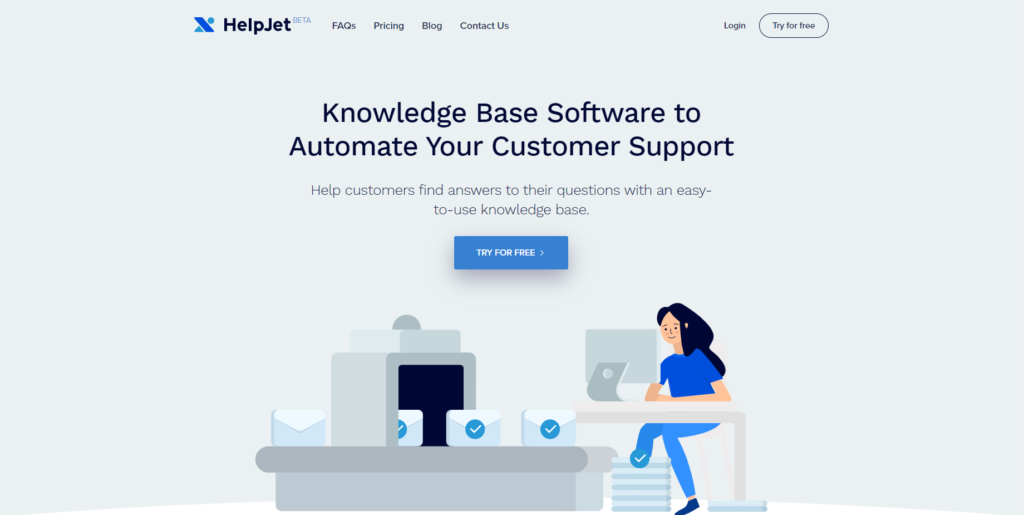If you’re wondering what a knowledge base is, you’re probably trying to build one or wondering if you need one.
You may have heard of it when you were training or when you needed support… but you’re not sure what the difference between a knowledge base, a database and a FAQ is.
So, what exactly is a knowledge base? Why do you need one? What should you put in it? How should you organize it? There are so many key questions, so let’s get right into it.
Let’s define “knowledge base”
The definition of “knowledge base” in the Cambridge dictionary is:
“A collection of information about a particular subject”
A knowledge base is an online tool which centralizes all information relevant to a subject. Suffice to say, it’s a crucial part of any business!
As compared to a database, a knowledge base aims to store more refined information so that it can be used by a larger number of people.
A knowledge base is more similar to an FAQ, but usually has more advanced information in a more clear format. It’s a collection of “articles” that contain documents, text or multimedia content.
Knowledge base benefits: Why do you need one?
When you save your customers time, you save money.
A knowledge base is often used by businesses to provide help to their customers without wasting precious support and sales resources.
By definition, the primary purpose of a knowledge base is to provide your customers with answers to their most frequently asked questions.
As a formidable self-help tool, it allows your customers to find the answers they need instantly and directly online, without having to contact your support service.
By offloading and automating a majority of the customer questions that would normally be handled by your support team, you save precious time and money.
Clear uniform answers for your team
A knowledge base is not just a tool used by customers, it can be used internally as a corporate knowledge base. It’s a great way to help train your team by giving them a reliable repository of all the best practice and processes in your business. Additionally, your support team can look to it as a north star for quick, reliable, and quality answers in times of uncertainty.
How to create a knowledge base
At first attempt, people often start with a simple FAQ, designing it and hosting it themselves.
However, there are two major problems with this solution:
- Your FAQ will quickly become disorganized, cluttered and difficult to navigate.
- The design of FAQs is not always engaging. If you have a small business, a FAQ may be sufficient, but if your company is growing, you will need a more professional solution.
Creating a knowledge base is not difficult, but it’s an incremental process. Yes it will take time and patience, but you will get a much better tool than a simple static FAQ.
Where to start to build a knowledge base?
The first step is easy: choose your system.
To make it easier for you, you can use a dedicated knowledge base software.
We built HelpJet specifically for people like you. Our knowledge base system takes less than 5 minutes to get started and has all the features you need to build a powerful professional-looking knowledge base. Try it out for free!
Next steps: creating, compiling and categorizing knowledge.
5 steps to creating a solid knowledge base
Step 1: Put yourself in the shoes of your user
You could add an infinite amount of information in your knowledge base but it wouldn’t all be useful to your customer or team.
The key to a good knowledge base is to have targeted data. You want your knowledge base users to find the answers to their questions as quickly as possible, with the greatest possible accuracy.
Keep the profile of your typical user in mind and design your knowledge base accordingly.
Step 2: Collect as much information as possible
Consider all sources of information. A good way to start is with your current support system, and its most common queries.
Browse your site from top to bottom and all the recurring support request topics to collect all the information you think will help your users.
Step 3: Write easy to read articles
Use all the information gathered as a base to start writing articles.
Make sure everything is explained as simply and targeted as possible.
If you have trouble creating content, seek advice from your support team for some commonly asked questions and problems.
Step 4: Pay special attention to categories
Now comes organizing your content.
Once your knowledge base is online, it’s important that its structure and organization are relevant and functional. By creating a solid foundation of knowledge with clear and precise categories, you will allow your users to quickly find the answers to all their questions.
Step 5: Don’t forget the keywords
Another key part of a useful knowledge base are keywords that link articles with similar subjects.
Lastly, you should set up a search functionality so that your user can use the keywords to find the relevant articles. You can even make a simple list of shortcuts to the most frequently asked questions and searched keywords.
Review your knowledge base frequently
If you got to that step, congratulations! You made it and launched your knowledge base. But the work does not end here.
All knowledge has a limited lifespan. Make sure you get feedback from your customers and update your content regularly. Your business changes and improves often, so should your knowledge base.
Some knowledge base systems like HelpJet offer search analytics and give users the ability to rate the relevance of the articles, allowing you to decide which articles to keep and which to hide.
Last tip: if some content is no longer useful, archive it instead of deleting it. You may want to reuse it later.
What’s next?
You now know everything about building knowledge bases.
Don’t hesitate to look around to get some inspiration to model your knowledge base on. Luckily, we’ve got an article to help you with that. Take a look at the best examples of knowledge base articles to see how other businesses have improved their bottom line with knowledge bases.




